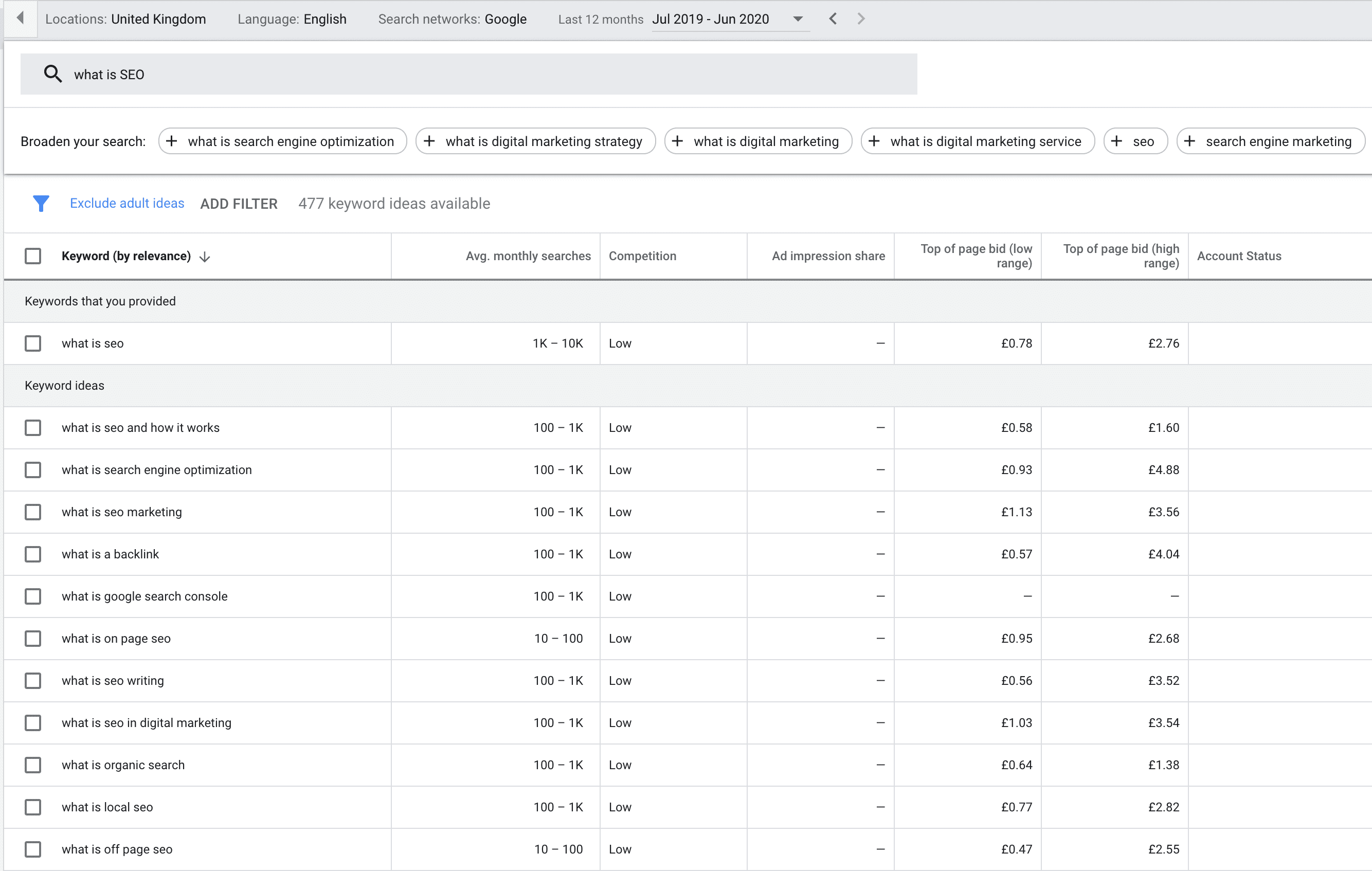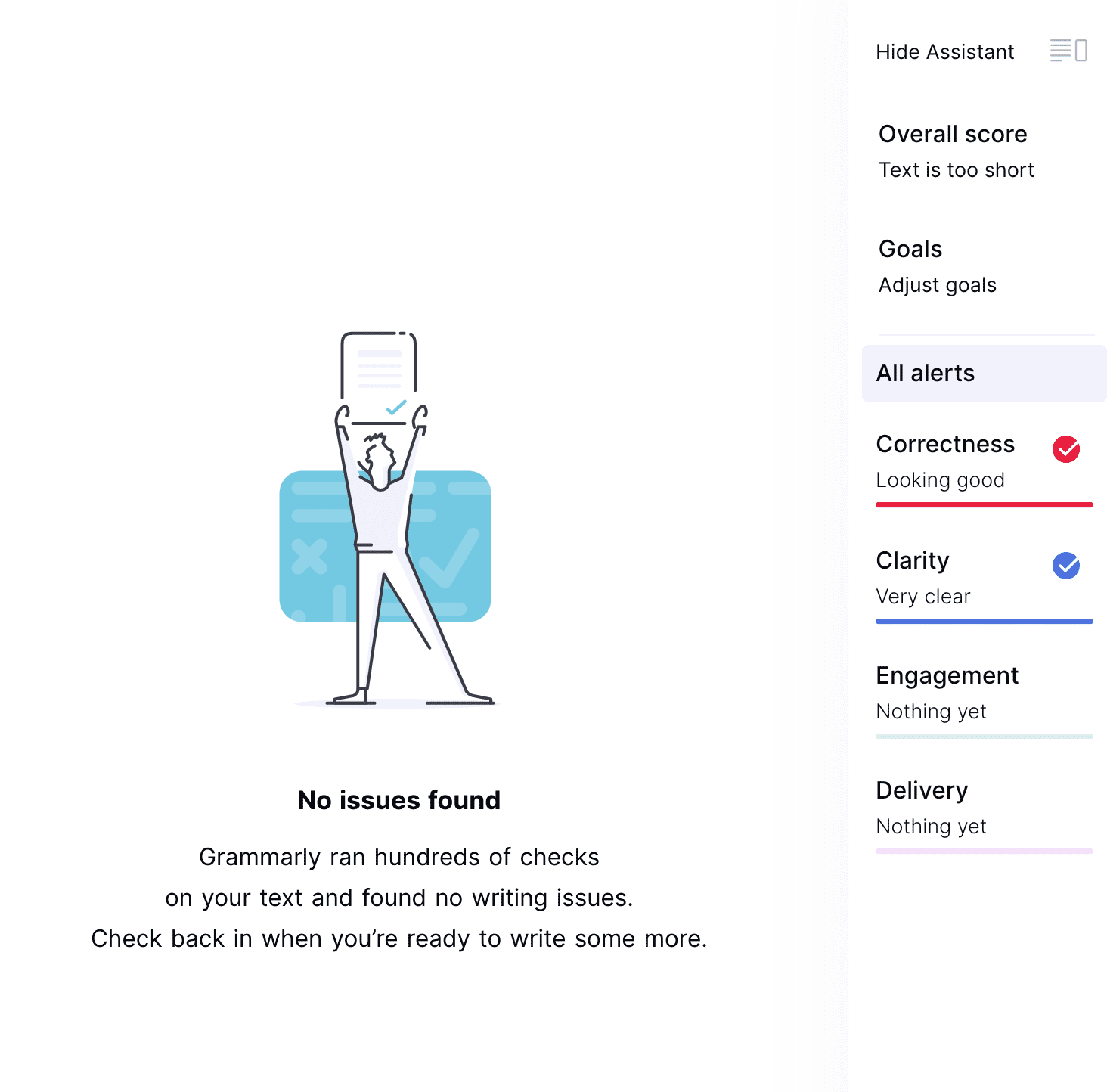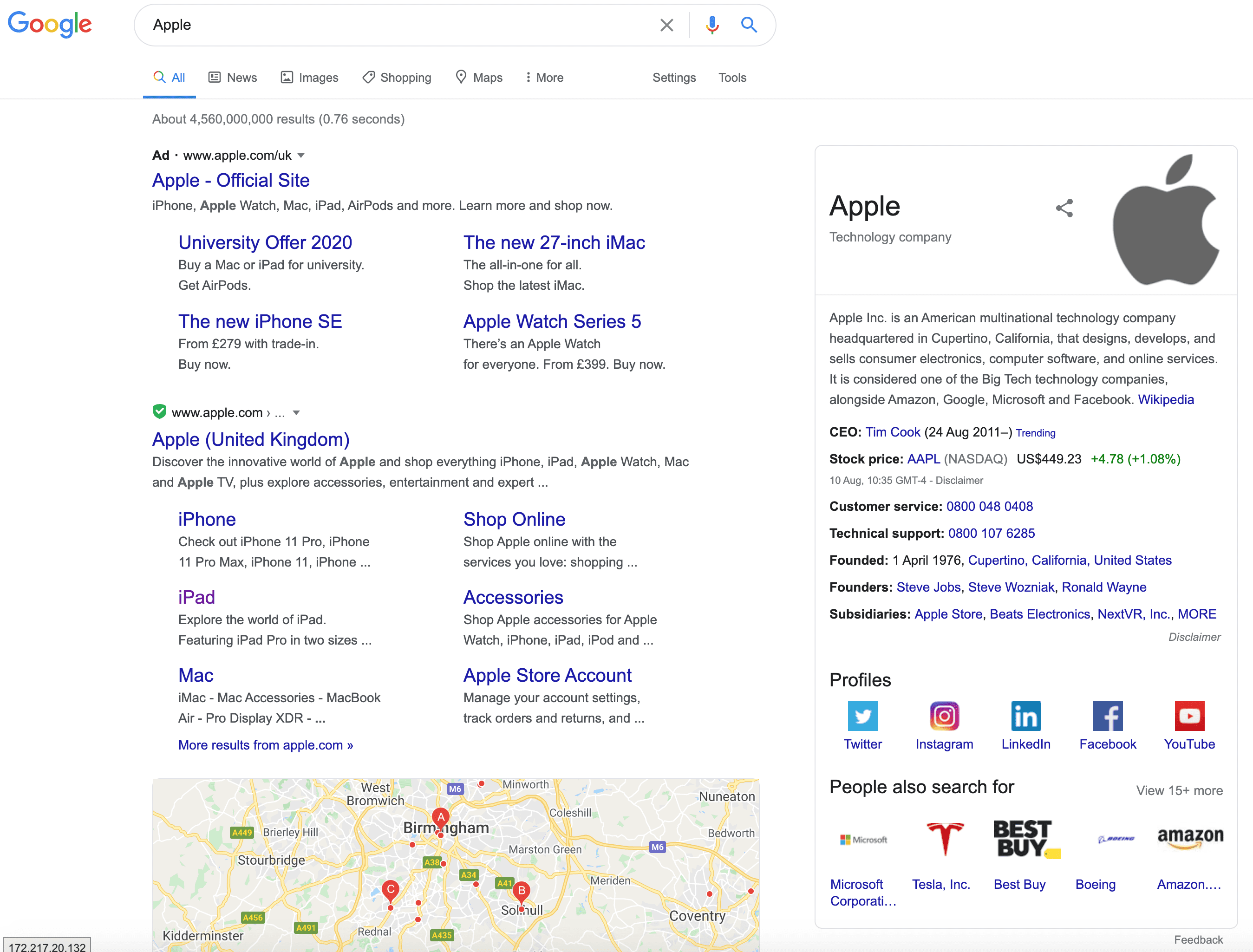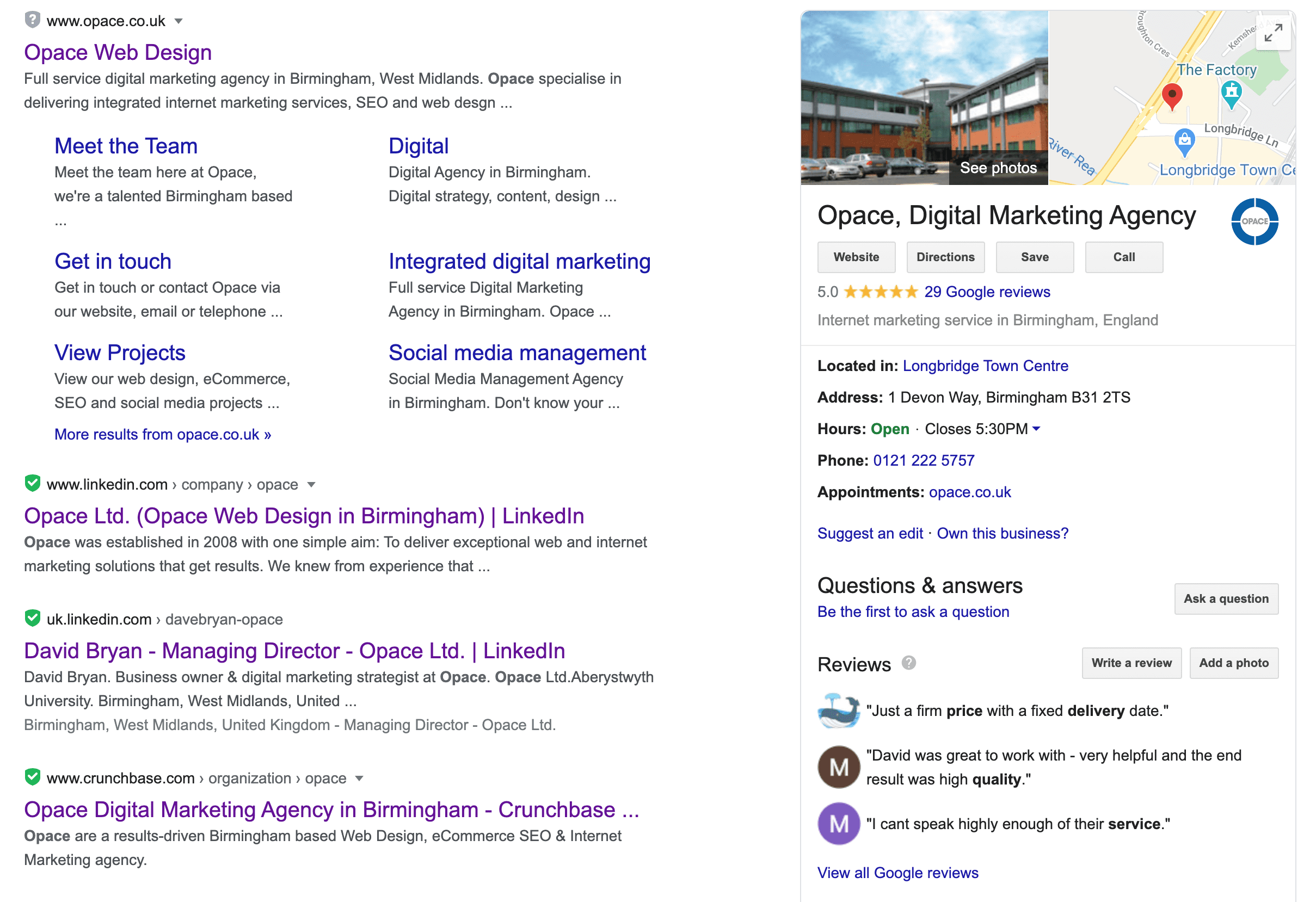Top 12 SEO Quick Wins & Tips To Improve Google Ranking in 2020
- 1 Why Google?
-
2
How to improve your Google ranking position?
- 2.1 1. Plan your SEO gradually
- 2.2 2. Consider search intent
- 2.3 3. Research and analyse keywords
- 2.4 4. Define your site structure and internal linking strategy
- 2.5 5. Produce great content
- 2.6 6. Keep your website fresh and content refreshed
- 2.7 7. Optimise your website and existing pages to improve Google ranking
- 2.8 8. Focus on good UX and site speed
- 2.9 9. Apply structured data and take advantage of SERP features
- 2.10 10. Optimise your Google My Business listing
- 2.11 11. Engage potential users and promote your site
- 2.12 12. Deliver continual improvement and consistency
- 3 Conclusion
The way you optimise a website can really help improve Google ranking and lead to more traffic. There are literally hundreds of different factors that search engines use to determine rankings and it’s ever-changing.
To give you an idea of the various ranking factors in 2020 and how complex SEO can be, see this article – https://www.link-assistant.com/news/ranking-factors-2020.html

Our top SEO quick wins to improve Google ranking in 2020
But there are still many simple steps that most business owners can follow and our SEO basics guide is a great place to start. If you do this right, it can help increase your visibility online and drive significant improvements in Google rankings, traffic and sales.
Why Google?
In recent years Google has been playing a very important role in the development of internet search as can be seen from the latest algorithm updates and new developments in the design of its SERP (Search Engine Results Pages).
Google has become the most popular and well-known search engine in the world and wants to improve the quality of its search results by helping website owners to produce better quality websites using freely available tools. Such tools include Google Analytics, Search Console, Keyword Planner, PageSpeed Insights and much more. These tools are incredibly helpful when used in conjunction with SEO techniques to improve the quality of your website and ranking in Google.
How to improve your Google ranking position?
Whilst the goal of this article won’t provide a full and detailed SEO strategy, it is based on our many years of experience delivering SEO and provides our top SEO 12 Tips and Quick Wins to improve your Google ranking in 2020. So here goes…
1. Plan your SEO gradually
For small most business owners, time is limited. Consider starting small by planning your SEO tasks in phases and tackling them in logical groups. To help with this, the 10 Quick Wins we have included below are ordered into a series of steps you can easily follow.
When putting your plan together, spread each phase over a sensible period of time, so that the work can be completed. Allocate no more than two hours per day. This way, your SEO efforts won’t become overwhelming and you’re more likely to commit to the task and see it through to completion.
2. Consider search intent
Search intent (or user intent) is the final goal of a user searching for a particular phrase in a search engine. For example, what does the user really want to find when browsing Google – is the goal to buy a product, find information, answer a question or gain “how-to” instructions via video? There are many reasons why somebody might carry our a search online.
This is essentially what determines a good search engine from a bad one. They need to accurately determine what the user needs and then provide the correct results.
Therefore, it’s essential to consider the search intent of your visitors before even thinking of keywords or content. If you get this wrong, you could end up attracting unwelcome or irrelevant traffic, which will ultimately cause visitors to drop off and devalue your SEO efforts. Worse, you could end up getting bad reviews on external sites, which can be extremely hard to remove.

Consider search intent
As part of considering search intent, think about relevant modifiers and suffixes.
Some typical examples are below:
- Informational searches – “What is”, “How to do”, “What are”, “Examples of” – typically where a user’s intent is to find an answer to a question
- Transactional searches – “Buy a”, “Sell my”, “Purchase a”, “Shop for” – typically where a user’s intent is transactional e.g. relating to buying/selling products or eCommerce
- Visual searches – “Show me”, “View a”, “Present a” – these searches are normally where a user’s intent is to view something visually
3. Research and analyse keywords
Your main goal is to drive traffic, and driving targeted traffic is only possible if you are targeting the right audience and giving them what they are looking for. To achieve good rankings in search engines, you will need to consider keywords and include these within your content. By doing this, you are helping not only visitors to find you but also search engines. This is important because most of the major search engines like Google need to crawl and index your website in order for it to be found in search results. When they do that, they pick up on your website’s keywords and index your content based on those keywords.
The starting point is always keyword research. To find out what keywords work best for you, there are various methods you can use:
- a) Consider user intent and what you visitors will be looking for – brainstorm any keyword ideas
- b) Use tools to assess whether those keywords are worth pursuing – a good keyword research tool will allow you to conduct a quick and easy keyword search, as well as generating lists of related keywords to use. One of the most important SEO tools available for site owners is Google’s keyword planner tool, which gives you the ability to see how many searches there have been for a given keyword over a given period of time.
- c) Search Google for the keywords you’ve identified – see what results come up and how relevant they are to your business
- d) Review all search engine features available to you, e.g. featured snippets, questions and answers and related topics. At the top of Google, you will see “People also ask” and at the bottom, you will see “Searches related to…” – use everything available in order to come up with relevant keyword ideas.
After identifying your keywords, you then have to determine the most appropriate keywords for your business, content and user. Keyword selection is essential to the success of an SEO strategy. If you are using a keyword research tool, you can narrow down the keyword list to one or two terms per page or create clusters of content based around related keywords.

Carry out keyword research using the Google Keyword Planner
Some people prefer to use the most popular keywords first, but this will only work if your site is either established with a lot of trust and authority already gained with Google or you operate in a niche which has little competition. One way to determine your authority is to check your website’s Domain Authority (DA).
Less popular or lower search volume keywords (e.g. longtail phrases) often provide a quicker ranking and opportunity to start delivering traffic to your site.
Finally, try to implement those keywords in your website’s content.
4. Define your site structure and internal linking strategy
There are different ways of thinking about site structure. Business owners will normally think in terms of their menu design, whereas web developers and technical people will often think in terms of sitemap creation and flow diagrams.
In an ideal world, the site structure would be established at the same time as any keyword research. This way, the sitemap, menu and corresponding content will all be aligned to the keyword research you have undertaken.
Another important factor that will help you to be found in Google, is where and how to use different keywords across your website. You shouldn’t use the same keyword in every single page, but instead, use different keywords or phrases on different pages throughout the site. Flow diagrams can often help with designing how you would like these keywords to interlink/relate to each other throughout the website. This is especially useful when creating related content or clusters of content.

Define your site architecture linking strategy
Having a well-architected site structure is essential to SEO regardless of whether you are building a new website or updating an existing one. Getting this right can help search engines to crawl and index your site and have a positive impact when trying to improve Google ranking.
5. Produce great content
The goal here is to produce content that people can find, enjoy (i.e. they stay on your page) and then share. The most common way for businesses to improve Google ranking is by creating a website that contains relevant quality content.
Naturally, most website owners will write and create content that contains relevant keywords. We do this without even thinking about it most of the time. This alone will help to get your website and content found in Google, but the websites which have the best chances of being found are the ones that include relevant keywords that people are searching for.
Of course, it’s not all about keywords. As covered when discussing search intent, relevance is key. It’s also essential to have well-written content, that can be easily read and understood by your intended users. If your content is hard to understand, it could cause many people to leave your site (known as ‘bounce rate‘) because they feel that it’s not something that they want to read. Having a poor bounce rate can lead to a negative impact on your search rankings.
It is important to consider word count and length when producing content. There is also an aspect of critical mass when it comes to content creation. A website with 1,000 pages of well-written, meaningful content, each with 600 or more words, is likely to provide better Google ranking than a site with 10 pages, each with 200 words. Adversely, having lots of duplicate, poor quality or meaningless content will do far more harm than good. This is the kind of content that was heavily devalued and penalised under Google’s Penguin updates back in 2016.
Providing users with content in a form they can best digest is important. For most of us, we take in information visually, so image or video really is worth 1000 words most of the time. Don’t forget the shareability factory, having content that is useful, interesting and easy-to-digest will make it more likely that the user shares it with their friends, family or co-workers.
There are great tools to help with producing content, such as brainstorming tools for ideas, title generation websites, keyword optimisation aids and language correction tools. One of my favourite free tools is grammarly.com, which can be installed as a browser extension to help you improve aspects such as grammar, spelling, and punctuation; consistency; fluency; clarity; engagement; and much more.

Check your content using Grammarly
6. Keep your website fresh and content refreshed
Keeping your website fresh with new content is a well-known SEO Quick Win. Adding a blog is a great way to do this and should be done as quickly as possible since your competition will almost certainly have a blog of their own site.
Typically, you will see websites which have a ‘Blog’ section; however, sometimes this can take the form of ‘News’, ‘Tips’, ‘FAQs’, etc. All of can be set up using the features of a Blog and they all serve a similar dual purpose, i.e. adding relevant meaningful information AND keeping the website fresh with new content.
WordPress is a popular choice for creating a blog and can be added to an existing website with relative ease. For informational websites and even more complex sites, such as eCommerce, WordPress is great choice to build the entire site with its global community of users and a massive choice of freely available and premium themes/plugins.

WordPress is a great CMS for keeping your website fresh
With platforms like WordPress, it’s easy to upload and schedule blog posts so that they are published on an ongoing basis. To avoid the website appearing stale, a minimum recommendation of one new post per month would be sensible, but the more you can commit and post on a regular basis, the more search engine crawlers will be keen to come back. This will also help with the critical mass dilemma raised above.
The other advantage of CMS platforms like WordPress is that it’s straight forward to revisit old content and give it a refresh. For example, most content will have a timeliness element, e.g. current trends, products, data, insights, services, etc. It’s very rare that content can’t be refreshed and updated based on the latest information available. What’s not so well known is how quickly this kind of activity can revive your content and improve Google ranking. It’s even relatively simple with platforms like WordPress to refresh your entire website and give it a fresh new look and feel which shows Google that you actively maintain your site and care about UX.
7. Optimise your website and existing pages to improve Google ranking
Optimising your website is a vital part of its success and ensuring potential users can find you when searching online. Website optimisation can take many different forms, including technical tuning, UX and design, optimising content for keywords, site structure and much more.
We’ve covered some of this already but to stress the point again, one of the most important aspects of SEO is keyword research and content, because this helps to determine how relevant your site is to users and search engines. The part not covered in detail is how to carry out keyword optimisation. This is an article in its own right, but it is important to state that the most important elements (in priority order) to consider when optimising each page of your site for keywords are as follows:
- Meta title, also known as your page title
- Page URL or address
- H1 or Page Title
- Other heading tags (H2, H3, etc)
- Page content, including text, internal links and image ALT tags
- Meta description
It is widely recognised that if your website is not well organised or contains very little relevant information, then your search engine ranking will suffer. Therefore, when you create or update your website, you need to ensure that it is easy to navigate, contains enough relevant information and it engages the user.
If your website fails to meet these basic criteria, you’re your Google rankings will struggle.
There are also various other more technical optimisation techniques that will be covered further below, including good UX design, site speed and applying structured data. Some of these can provide the greatest SEO Quick Wins when implemented correctly.
8. Focus on good UX and site speed
It is also possible to improve Google ranking by having a good web design and providing visitors with a great User Experience (UX). Part of having a good UX means having a well-designed site structure and easy-to-use navigation as covered above.
Next to this, our top five recommendations for a good UX include:
- Having a mobile-friendly responsive design so that your site loads well on different devices and screen resolutions
- Adding clear calls to action throughout your site to make it easy for users to find what they need
- Ensuring simplicity – often the best website designs are the simplest
- Having a site which has been optimised for speed using tools and loads quickly
- Security – ensure your site is loaded from a secure “HTTPS” URL which uses an SSL certificate. SSL certificates are freely available through the Let’s Encrypt initiative and you should be able to set this up fairly easily via your web host.
Based on our experience of SEO over the years, site speed is probably the fastest and most effective SEO Quick Win that you can undertake.

Why speed and page load times is an important factor to improve Google ranking
Having an efficient, fast-loading website will benefit you both as a business owner and your users. Google understands that a slow website which leaves the user hanging provides a poor UX, frustration and they are unlikely to come back. This can result in them leaving your website. It is important to keep in mind that users are impatient and want what they want right away. They do not want to wait for your page to load. Worse, if they can’t access a page, they may turn their frustration into a complaint. On the other hand, having a fast loading website removes this issue and is often rewarded by Google. Some of the quickest SEO improvements we have seen has come about by getting this part right.
In the fiercely competitive world of eCommerce, poor page load times can create another issue. Users are looking for the best deals and often have the same product open from various websites. Having a site which loads quickly and provides the latest pricing information is essential.
Some useful tools for evaluating site speed are listed here.
9. Apply structured data and take advantage of SERP features
We won’t go into detail on technical mark-up as we’ve covered structured data here. However, doing this correctly can help you to take advantage of SERP features.
The list here is growing all of the time, but suffice to say, long gone is the time when only your website content or paid ads dominated the search results pages. Now we have SERP features in Google such as:
- AdWords / Sponsored Results
- Related Questions (also called Answer Box Results or ABRs)
- Featured Snippets
- Local Pack (Google Maps & Business listings)
- Image and Video Packs
- Knowledge Panel
- News Results
- Shopping Results
- Events Results
- Recipes
- Related Searches
- And more…
We’ve covered what Featured Snippets are here. Another point worth commenting on is Google’s ‘Knowledge Panel’ as this allows you to showcase information about your business or brand, including reviews. The Knowledge Panel will pull information about your business from various different sources and provides an excellent way to spread the word about your business, especially if you are selling online. People love to see reviews on your business and will want to read what others think about it.

Take advantage of SERP features like Google’s Knowledge Panel
As you can imagine, these SERP features like these are taking up an ever-growing amount of Google real-estate space and it’s essential to take advantage of this in order to gain visibility and clicks via Google.
10. Optimise your Google My Business listing
Following on very closely from above is Google My Business. Google My Business (or GMB) is a tool which allows anyone to post their company details so that they have a unique presence within the SERP results and Google Maps for local or brand-related searches.
There are many SEO benefits in using Google My Business and it’s another of our most effective SEO Quick Wins given it’s so simple to set up and works as soon as your listing is approved.
For those who do not know, it’s a free service to help Google users locate your business across search, Google Maps and more.
Google My Business displays information such as:
- Business name and description
- Logo, images and maps
- Contact details and web address
- Pricing information
- Opening hours
- Reviews
- Questions and answers relating to your business
- Updates and posts from your business
- Appointment booking
You can also gain insights when logging into your GMB account about clicks and engagement.

Content-rich Google My Business listing for Opace
This can present a huge opportunity to attract visibility and generate traffic over and above what your organic website rankings will provide. Here we have provided various tips covering how to optimise your Google My Business listing; however, the ability to promote your business doesn’t end there. In the past, Google released Google+ (Google Plus) as its social network. This was closely aligned to GMB but has now been discontinued. However, GMB still provides a form of social networking, with social-like features to rival Facebook and Twitter such as:
- Post and share content (messages, links, pictures and videos)
- Ask and reply to each other’s questions
- Receive direct messages from users
- Post special offers
- Gain followers who would like to receive notifications
This often unknown or under-utilised feature provides a great way of driving more local business and enhancing engagement with potential users or customers.
Google My Business is so easy to use and is an excellent tool for promoting your business, no matter what type of business you’re in.
11. Engage potential users and promote your site
As well as designing, building and optimising a great website, you will need to promote it to potential new users.
While all of the above points provide relative SEO Quick Wins, the last part of the puzzle is the more time-intensive and expensive part. Promoting your website, can’t be done as a one-off activity, it’s an ongoing process that requires correct planning and resourcing. It also doesn’t yield results as quickly as the other activities but it’s still an essential component in attracting new users and building authority online.
There are so many different ways you can promote your site, but selecting the right method of marketing or advertising always depends on the objective. For example, if the goal is sales then the method may be different from that of generating traffic and would almost certainly be very different to that of generating engagement or buzz.

Promote your site with targeted marketing strategies
Here we cover push and pull marketing strategies. In a nutshell, Push marketing places your business in front of users when they are not actively looking. One of the best and most effective examples of Push marketing is Facebook advertising. By creating well-designed and targeted ads you can quickly get in front of potential users, attract their attention and push them towards your website. Another popular choice is sending out email newsletters to people who are connected to your target market and may be interested in your business. Newsletter marketing can effective as it gives them a way to find out more about the products and services that you provide, as well as providing valuable information about you and what you are selling, so they can feel a connection with you.
The other option is Pull marketing which allows you to entice a user who is actively looking for your website. Popular examples of Pull marketing include SEO (organic) and Pay Per Click or PPC (sponsored). For a detailed comparison of the two, please see our SEO vs PPC guide here. You can also consider remarketing as a means to use PPC to remind previous visitors about your website and attached them back again. This is a great way to reinforce sales messages and make sure your business is not forgotten.
PR and social media are two of the more unusual examples as they both fall somewhere between Push and Pull depending on how it’s used. With online PR and social media marketing, business owners generally want to grow brand visibility and interact with followers (often existing customers or potential users), rather than generate sales. That said there are case studies that show where social media has been used as an excellent tool for generating sales. For a wealth of information social media platforms and uses, please see our guide on using social media for B2B marketing.
Generally considered part of SEO (or link building), but alsocial media to some degree, is blogging and content marketing. This method of marketing can be effective in a number of different ways:
- establishing you as an authority on your subject matter, also known as Topical Authority
- promoting your business to unknown users or potential customers using online PR or blog outreach strategies and building links back to your site
- attracting more users/visitors by publishing new keywords and content
- keeping your site up-to-date and fresh with relevant content
- providing new and interesting things to say and share on social media
For those interested, here you can find a detailed guide on backlinking your way to success which covers all of the various strategies involved in link building, including content marketing.
There are many advantages to digital marketing so if you want a targeted, fast and cost-effective method to promote your business or to increase engagement with users, make sure you take it seriously.
12. Deliver continual improvement and consistency
It may sound obvious, but don’t forget to track your efforts and measure the success of your SEO and digital marketing on an ongoing basis. Sadly, the process of improving your Google rankings is a never-ending one and needs continual improvement especially as algorithms change, new search features are introduced and competitors try to get ahead.
Delivering the SEO plan created in Point 1 and then forgetting about it is probably the most common and understated error you can make. Once you have published your keyword-researched content and your site is optimised, you will need to check how well you work is performing and continue to change, enhance and even potentially remove work you’ve done based on the results. Refreshing previous content is an excellent strategy to drive further improvements, especially as your content starts to disappear in Google’s search results and needs a new lease of life.
Consistency is also key. Delivering an SEO plan and then walking away will only mean that your competition will seize the opportunity to overtake your efforts. As well as revisiting old plans, it’s important to deliver continual improvement by adding new keywords, content and SEO strategies over time.

Consistency is key to delivering continual improvement
Luckily, with the latest EU regulations, search engines like Google and Bing are required to provide greater transparency around how they rank content. It’s our hope that this will make it easier for online businesses to plan and improve their SEO strategies.
As the world continues to change and adapt, businesses need to find ways to enhance their SEO and remain competitive. Therefore, businesses must stay on top of their game and remain consistent when it comes to their SEO practices.
Conclusion
These are just some of the tips and SEO Quick wins we’ve identified over the years to help improve Google ranking. There are many more things you can do in order to get ahead in SEO, but it all begins with assessing where you are within the SEO journey and selecting the best methods to help you along the way.
That said, with these twelve elements in place, you can expect to see a dramatic improvement in your SEO and digital marketing. As a small business or perhaps even a one-man-band, you will need to consider what resources you have available.
A strong online presence is what you need in order to be successful in business and we hope this guide will go a long way to helping you achieve this. It’s always possible to make time for SEO, but don’t forget there are digital agencies out there like Opace, freelancers, marketers and SEO tools to help assist you. While these methods can be a little more expensive than trying to do everything on your own, the additional support often pays off in the long run.
Best of luck!
« Back to Glossary Index
![Seo content creation guide for good content - why good content matters: seo content creation guidelines [updated] Seo content creation guidelines for good content](https://www.opace.co.uk/wp-content/uploads/2024/03/SEO-content-creation-guide-for-good-content-150x150.jpeg)



